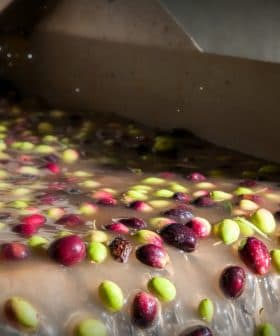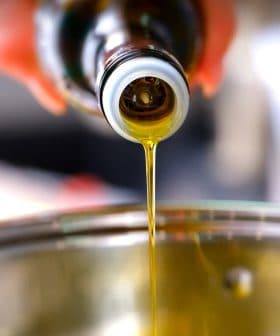Researchers Extract Olive Oil Pigments to Detect Frauds
Italian researchers at the University of Pisa have developed a new, cheaper, and faster method to test the organoleptic qualities of olive oil and detect possible frauds, building on previous research by the University of Calabria. This method, published in the Journal of Agricultural and Food Chemistry, uses “oil pigments” to quickly and accurately determine the quality of olive oil, making it easier to identify common frauds such as heat-treatments and mixing with other vegetable oils.
Last year, the University of Calabria presented a method to detect olive oil frauds based on magnetic resonance testing. The method, devised by researchers Giuseppina De Luca and Loredana Maiuolo, is considered highly reliable for the detection of freshness and origin, but it is quite expensive.
Now, fellow Italian researchers Donatella Ancora, Mario Cifelli, Carlo Alberto Veracini and Maurizio Zandomeneghi at the Industrial Chemistry Department at Pisa University, coordinated by Valentina Domenici, created a new, cheaper and faster way to test the organoleptic qualities of the olive oil and to expose possible frauds.
In developing the research, the team worked with Andrea Serani, quality manager at SALOV, a huge olive oil company in Tuscany that was recently sold by its Italian owners to the Chinese group Bright Food, a multinational food and beverages manufacturing company headquartered in Shanghai.
The research project lasted four years, and its outcome was recently published in the Journal of Agricultural and Food Chemistry under the title of Extraction of Pigment Information from Near-UV Vis Absorption Spectra of Extra Virgin Olive Oils.
The team looked at the the process by which olive oil ages and the effect of heat. They used “oil pigments” that dominate the light absorption, to extract chemical information in less than a minute. Even if these pigments represent only 2 percent of the total compounds in olive oil, they are essential to test and verify its organoleptic qualities and to detect fraud and adulteration.
“Our method, “Valentina Domenici explained, “allows us to quantify, through a mathematic process of deconvolution of the UV – vis absorption spectrum, the concentration of four main “oil pigments:” lutein, pheophytin‑a, pheophytin‑b and β‑carotene. With a few, simple procedures the oil is inserted into a small quartz cell. We then obtain the spectrum which takes a distinctive shape and which allows us to understand immediately whether the oil has been adulterated or not.”
Thanks to this method it will be easier and cheaper to unmask the most common frauds olive oil can be affected by: heat-treatments commonly used to erase unpleasant smell and taste, bad storing conditions and exposure to light or oxygen, or mixing with different vegetable oils.
“In all such cases,” Domenici said, “the spectrum curve that is obtained substantially changes and it becomes a clue to unveil the fraud. It only takes a few minute to have the response while other, more expensive methods that are the only ones approved by EU regulations at the moment, need one or two days in specialized labs.”









